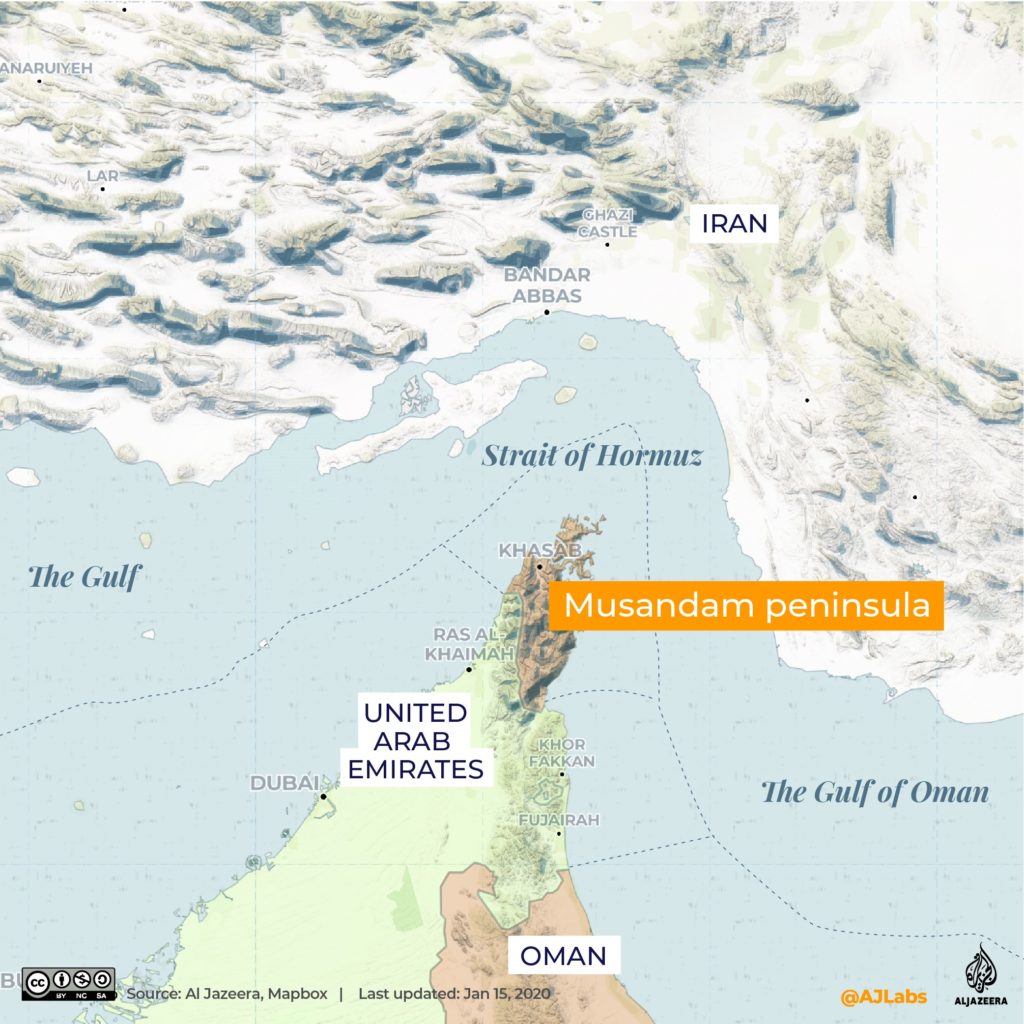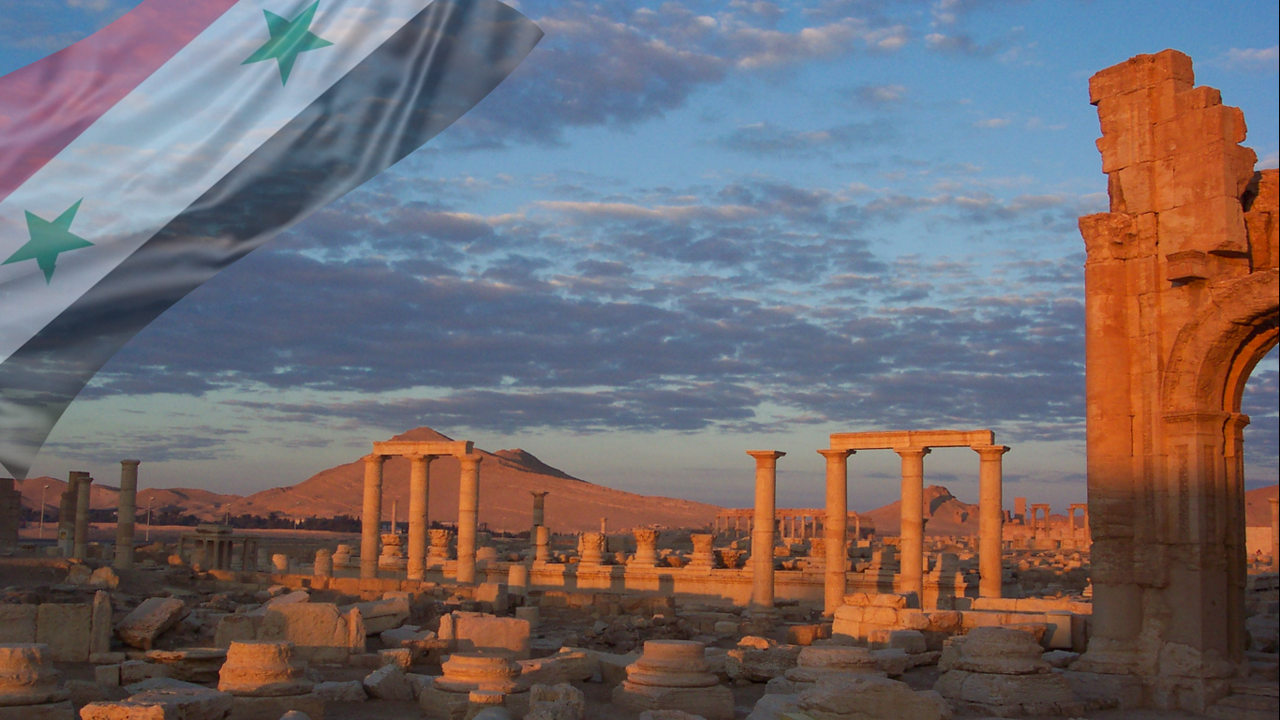Though it did not bring much media attention around the world, the Sultan of Oman who lead his country for almost five decades, Sultan Qābūs passed away recently. That lack of interest around the world is understandable. There are way bigger news in the Middle East now from Libya to Iran, the transition went smooth, and altogether Oman usually attracts little attention, thanks to its peaceful relations with its neighbors. There were, however, noticeable peculiarities around this transition, which so far were unnoticed even in the Arab world. All these contradictions suddenly came to light, after a scandalous event, right between the new Sultan Haytam and the Crown Prince of the Emirates Muḥammad ibn Zāyid.
Suddenly, while mostly Western assessments about the new Sultan and prospects of the Sultanate were sketchy, mostly concentrating on the heritage of Sultan Qābūs, a steady race could be noticed now. The transition and sudden rift between Muscat and Abū Zabī brought attention in the Gulf, as seemingly both the UAE and Qatar do a lot to bitter Oman’s relations with the other side. While Sultan Haytam’s transition goes smooth so far, it seems the new ruler will face difficulties with his neighbors. Problems, that were present and have long history, but so far were buried under the stature and the charisma of the old Sultan Qābūs. As only as his death has suddenly awaken age old animosities.
But what are these old problems? Why is Oman so significant, both in the region and even globally? What are the challenges the new Sultan has to face now, and what are the peculiarities of his transition?
From transition to scandal
The first peculiarly is that it was not As‘ad ibn Ṭāriq, a cousin of the late Sultan, who took the throne. Since 2017 he was the Deputy Prime Minister, therefore most sources, as we ourselves in an earlier report supposed that he is the designated heir. Yet now another cousin took over, Haytam ibn Ṭāriq, who who was rarely mentioned before as possible candidate, and who, by certain reports, was particularly supported by the military. Which is even more curious, since unlike As‘ad ibn Ṭāriq, he has no military record. Even so, his accession to power was not only smooth, but reportedly by the testimony of the late Sultan. Reports claim that even the Royal Family Council refrained from having a vote on the new ruler and rather opted for the direct implementation of the old Sultan’s testimony. Which is not particularly odd, only in this strictly puritanical ‘Ibādī state.
More controversial is the scandal, which broke out only two weeks before the death of Sultan Qābūs, when returning from a medical treatment in Belgium he was claimed to be dead by the certain Israeli commentators. This especially caused uproar in Oman, because it was viewed that the UAE was behind the story, which even mentioned the name of the new Sultan, a name not existent at all. And this notion soon will have special importance.
On 13 January the new Sultan welcomed delegations from all over the world, especially from fellow Arab states, and many of head of states visited him personally. Including, beyond all expectations, King Salmān of Saudi Arabia, and King Ḥamad from Bahrain. It was less puzzling why President as-Sīsī of Egypt did not present himself, nor why Syrian President al-Asad, but it was a showing sign that the Syrian delegation lead by Foreign Minister Walīd Mu‘allim was warmly welcomed. Which might indicate a shift in Omani policies more closer to Damascus. All these, however, were simple formalities, until videos were aired, showing Sultan Haytam particularly cold with Muḥammad ibn Zāyid. Even more, upon departing Sultan Haytam was not willing to shake hands with the Emirati Crown Prince regardless of his attempts, which was followed by aggressive and scandalous gestures by Muḥammad ibn Zāyid.
It was explained by some as a difference in customs that the Sultan only wished to lead his guest to the entrance and only shake hands with him there, but that hardly explains the clear tension between the two and the aggressive measures by the Emirati Crown Prince. Even less why Sultan Haytam simply left his guest after the row, which noticeably left Muḥammad ibn Zāyid furious. And that lead many to wonder why this incident took place at all, knowing that such offenses are particularly harmful in Gulf societies, where personal insults in this level between royalties can cause decade long quarrels. In light of the behavior with other delegations, not only with the Saudi King, but also the Qatari emir, who was on his way from there to Tehran, this notion is significant. Especially from a person rumored previously as more close to the Emirates.
The quarrels with the UAE and Saudi Arabia
The reasons go back to years of troubles between Oman and the Emirates, especially with the leaders of Abū Zabī.
First of all it should be mentioned that Oman for long has border disputes with Saudi Arabia back in ‘50s and ‘60s, and later on these were inherited by the Emirates. Some of the problems concern possible oil fields, while others the direct connection of the UAE with the Indian Ocean, but at the top of all disputes is the matter of the Musandam Peninsula. This southern tip of the Straits of Hormuz, which makes Oman, and not the UAE the partner of Iran in the control of this globally vital trade choke point. The disputes, however, go back long on a much more personal level as well between Oman and Muḥammad ibn Zāyid personally.
It was still 2011, the time when the whole Arab world was about to succumb to a major change by now known as Arab Spring, when an Emirati plot was uncovered against that Omani state and military institutions, allegedly planned by the Emirati State Security. In plain words, the Emirati State Security was planning a coup d’etat in Oman, and indeed Oman that year, to the surprise of many, did witness protests against the royal house. At that time this was a puzzling scene. And if that attempt was made by the Emirati State Security Bureau, it means Muḥammad ibn Zāyid. Later it turned out that Riyadh was also not far from the attempt. It either approved the move, or it actively supported it. Whatever happened, however, it was not met with harsh responses from Oman. In 2013 the rulers met in Muscat to solve the matter, which was the result of Kuwaiti mediation by Emir Ṣabāḥ himself. The same Kuwaiti emir, who in 2017 was so active to mediate between Qatar and the states besieging it. According to the reports Sultan Qābūs at first was furious and ordered state tv to lash out against Abū Zabī’s Crown Prince. After intensive mediation, however, it was lowered to only mention the Emirates, but not Muḥammad ibn Zāyid personally. As part of the deal of reparations the UAE had to pay 20 billion Emirati dinars (roughly $5.4 billion) to the personal account of Sultan Qābūs himself, and invest another 20 billion dinars in Oman. The first one was done immediately, while the second only partially as by 2013 the UAE invested 9,5 billion.
That could and should have been the end of it. In 2019, however, another plot was revealed by the same Emirati and Saudi circles. That again was not met with harsh retaliation. Foreign Minister Yūsaf ibn ‘Alawī even joked about it when he was questioned that such steps “happens between neighbors”. This means that the rumors about Sultan Qābūs’s death only two weeks before he passed away, whether indeed the Emirates were behind it to cause trouble, or not, was understandably viewed as a hostile act by many in Oman.
The Emirati frustration was clear even before the incident, which might foreshadow that the soft animosity and covert attempts by the Abū Zabī to undermine the Omani leadership might enter a new phase. A period of open tension between the two neighbors after several coup attempts. On 11 January, so only two days before the scandal the Emirati Erem News website published a seemingly insignificant report on the new Sultan. This subtly pointed out that Ṭāriq ibn Taymūr, the new Sultan’s father was born in Istanbul, his mother is Turkish, and he could barely speak Arabic as a child, practically placating him a Turk. Consequently the new Sultan as a son of a Turk. That is a bad enough suggestion, quite impossible in the Gulf, unless there is a malevolent purpose, but now it has an even bigger connotation. For some time now the Saudi and Emirati opinion centers placate the Turks and the Iranians as the same ideological intruders to the Arab world, whose only aim is to cause frictions within the Arab ranks. We recently dealt with such views. In this light the suggestion that the new Omani Sultan is practically a Turk suggests that Turkey already puts its own people within the Arab leaders. Which foreshadows that soon a much more vitriolic campaign might start against Muscat. Possibly since in Abū Zabī and Riyadh they already know that they will have much harder time to deal with the new Sultan than with his predecessor.
That can explain fairly well Sultan Haytam’s frustration with the Emirati leadership. Not to mention that it should have been Emir Halīfa ibn Zāyid, not Muḥammad ibn Zāyid, who represents the Emirates, since formally the emir is the head of state. The transition itself explains well why Oman is not active in the diplomatic maneuvers around Iran now, but the warm and cordial welcome to Emir Tamīm, knowing that right from Muscat he was heading to Tehran in an important diplomatic mission, might indicate that the new Sultan approves and supports the mediation.
Blood smelled in the water
Though for now the Omanis seem to be quite on the matter and don’t wish to pursue an aggressive retaliation, the row did not go unnoticed. The same way Muḥammad ibn Zāyid was trying to facilitate a policy change in Oman, now other parties are active to push this quarrel to a breaking point. It was not the Omanis, but the Arab language Iranian al-‘Ālam (The world) news site that picked up the Erem News’ article and pointed out how the Emiratis wanted ridicule the new Omani Sultan. And by than we were already behind the scandalous meeting between the Emirati Crown Prince and the new Sultan.
It did not take much for the other rival of the UAE, Qatar to join the campaign and also subtly indicate an imminent fight between Oman and it northern neighbor. Which otherwise is not a necessarily occurring thing. On 20 January Qatari state owned al-Jazeera published a new, very elaborate article about a possible tension between the Emirates and the Omani Sultanate. This new piece, while did not indicate nor the scandal, nor the coup attempts, concentrated on the matter of the Musandam Peninsula, which might soon become a strategic concern for the new Sultan. That notion is significant, since the matter is indeed important, but for long does not constitute a major issue in the Omani-Emirati relations. Therefore it might be an attempt to stir up tension.
This increased interest shows that all sides are concern about the transition in Muscat, while they also possibly see an opportunity to win Oman over to their side. Muḥammad ibn Zāyid could hope for a more lenient Sultan, taking more stern approaches either towards Iran, or at least Qatar. Doha, seeing this attempt might try to cause tension, hoping the if Muscat gets frustrated enough might join ranks with Qatar and distances itself from the UAE. While for Iran it is enough to keep Oman on the same course it was, a stable and reliable interlocutor, and is eager to prevent a major shift in the formerly amicable relations.
The price of Oman
Oman has a strategic importance regionally for its foreign policy, and globally for its strategic position. The later has much to do with the already mentioned Musandam Peninsula, right at the southern tip of the Strait of Hormuz.

The peninsula is a scarcely inhabited and still quite underdeveloped area, which for long was an isolated military zone of Oman. The Sultanate never really cared about the peninsula that much, since even with huge investments direct profit cannot really be gained from it. It was always enough for Muscat to have a control over Hormuz, which therefore generates considerable profit anyways. After all, this one of the most vital choke points of the entire global oil trade, which significantly increases Oman’s worth and foreign movement range. And this was an ideal solution for all parties concern, as Oman was for centuries conducting a peaceful regional policy. Simply put, Oman caused no troubles for anyone, and dealing with such a party was always seen more preferable than with the more troublesome Gulf neighbors. Especially Iran viewed this solution favorably, since it could not hope to take this point in control, but this way does not have to deal with its Gulf adversaries in the matter. While the Straight is always a significant bargaining chip for Tehran against the West that it can close it in case of aggression, in such disputes at least on the other side there is no adversary, who would invite foreign bases. Oman was the best possible neutral possessor for this vital possession.
That position, however, and the truly odd nature of the peninsula being an exclave of the Sultanate, makes it understandable the the UAE has an eye on the peninsula. Its claims are somewhat justifiable, and gaining hold over it, either a joint possession, would prove to be a significant advantage against Iran. That is one of the reasons why all try to influence the new Sultan in a given way.
While this is a matter for the globe, Oman has its own distinct significance for the region of the Persian Gulf. Oman, as we dealt with it before, is a unique state in the Gulf, religiously, politically and culturally. It stayed away from the major rifts in the Arab world and never pursued animosity against Iran either in our modern age. Quite the contrary, it has a policy of friend to all, enemy to none, which made it an excellent mediator between Iran, the regional Arab states and the West. And for the most time it was not only successful, but also highly profitable as well. Like the time when they agreed to connect the oil and gas pipelines evading the Emirates.
Consequently that self determined foreign policy for long was an irritation for Riyadh and recently for Abū Zabī. After the crisis broke out in 2017 in the Gulf, when mainly four countries started to blockade Qatar, after initial mediation attempts Oman stayed away from the quarrel and kept good relations with Doha. Understandably, since on the matter of Iran they are on the same page, while also Muscat would not be happy to see Qatar crushed by the Saudis and the Emiratis. Having been successful in that, they might try to put the same pressure on the Sultanate, which might jut start now.
On the Gulf inter-Arab level that puts Oman on the same page with Kuwait, which tries to evade trouble and keep up a balance. On the Iranian folder, however, Oman is on the same page with Qatar. Nothing shows this better than the obviously warm welcome, a straight opposite to what Muḥammad ibn Zāyid received, given to Emir Tamīm on the way to Iran. While this diplomatic move caused controversy for many, it hasn’t really bothered Oman, partially became Muscat now walks on the same path of de-escalation.
All these considerations make Oman an important piece in the strategic chessboard. That explains, why many see the transition as an opportunity to change Oman’s standing, while others are keen to keep him in the same line.
The race has begun.
The pressure will probably be big on the new Sultan in this initial phase. That is noticeable by such opinions, like in the mentioned al-Jazeera report, mostly by Western analysts, saying that Sultan Haytam will not be able to rule the same direct and absolute way his predecessor did. Which is quite the opposite his smooth takeover would suggest.
This further suggests a pattern in which the GCC is about to break up completely to at least two departing camps, even if the formal institutions stay functioning. Such a scene would not be uncommon in the Arab world. Not only the often completely paralyzed Arab League institutions show such scene, but also the example of the Arab Maghreb Union, which even amidst the highest tensions between it members always stayed nominally functioning.
In such a development Qatar and Oman are about to pull even closer to each other and are building amicable ties with Iran. Kuwait might follow suit soon, and even the Saudi-Emirati tandem might fall apart. Meaning only Bahrain stays within the Saudi orbit. In such an understanding it is noticeable that King Salmān himself went to Muscat to greet the new Sultan, and Muḥammad ibn Salmān was nowhere to be found.
Noticeably the race has begun, and the stakes are high. And on the other race around Iran, when foreign envoys visit Tehran in a long unseen frequency Oman might just be an important player.


